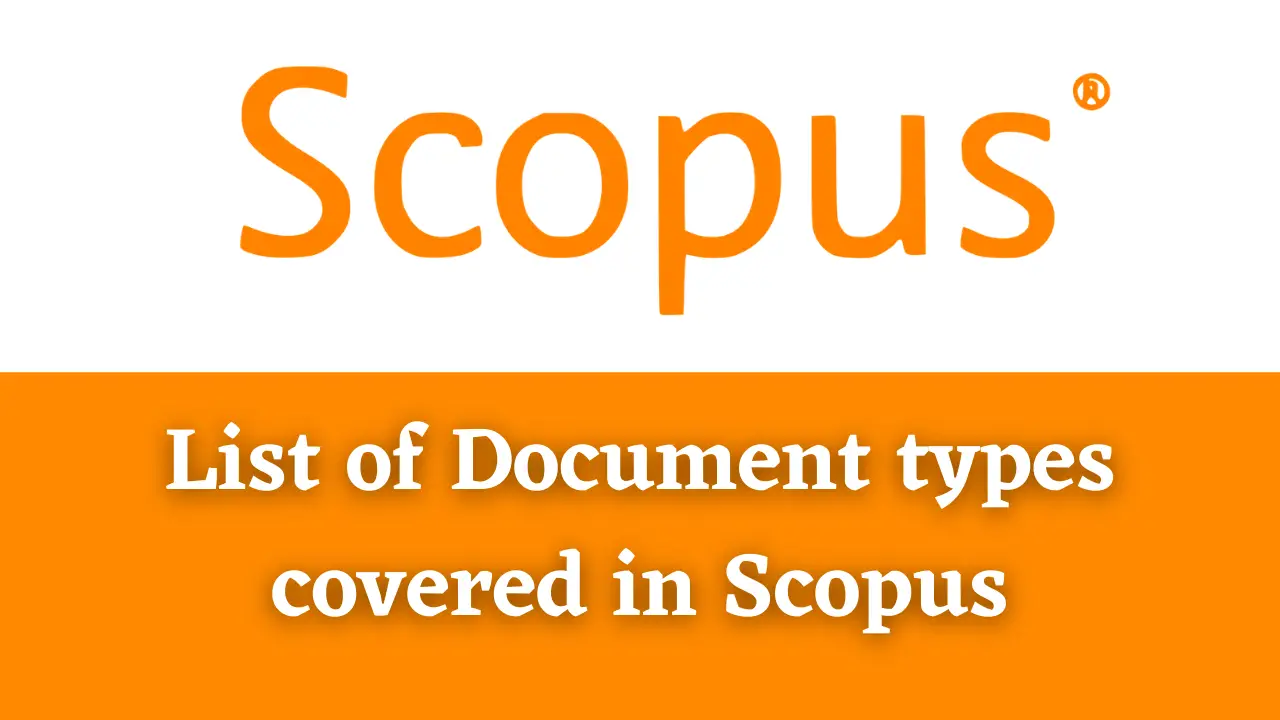Scopus is an abstract indexing database that currently has over 76.8 million core records. Scopus coverage focuses on primary document types from serial publications. Primary means that the author is identical to the researcher in charge of the presented findings.
Scopus does not include secondary document types,
where the author is not identical to the person behind the presented research, such as obituaries and book reviews. In this article, the list of document types covered in Scopus presented.
Document types covered in Scopus
1. Article
The article is original research or opinion. Articles in peer-reviewed journals are usually several pages in length, most often subdivided into sections: abstract, introduction, materials & methods, results, conclusions, discussion and references. However, case reports, technical and research notes and short communications are also considered to be articles and may be as short as one page in length.
Articles in trade journals are typically shorter than in peer-reviewed journals, and may also be as brief as one page in length.
2. Article-in-Press (AiP)
Article-in-Press (AiP) is the accepted article made available online before the official publication.
3. Book
A whole monograph or the entire book. Book type is assigned to the whole. Additionally, for books with individual chapters, each chapter, along with a general item summarizing the book, is also indexed with the source type Book.
4. Chapter
A book chapter is a complete chapter in a book or book series volume where the item is identified as a chapter by a heading or section indicator.
5. Conference paper
A conference paper is an original article reporting data presented at a conference or symposium.
Conference papers are of any length reporting data from a conference, with the exception of conference abstracts.
Conference papers may range in length and content from full papers and published conference summaries to short items as short as one page in length.
6. Data paper
Data papers are searchable metadata documents describing an online accessible dataset or group of datasets. The intent of a data paper is to offer descriptive information on the related dataset(s) focusing on data collection, distinguishing features, access, and potential reuse rather than information on data processing and analysis.
7. Editorial
Editorial is a summary of several articles or provides editorial opinions or news.
Editorials are typically identified as editorial, introduction, leading article, preface or foreword, and are usually listed at the beginning of the table of contents.
8. Erratum
Erratum is a report of an error, correction or retraction of a previously published paper. Errata are short items citing errors in, corrections to, or retractions of a previously published article in the same journal to which a
citation is provided.
9. Letter
Letter to or correspondence with the editor. Letters are individual letters or replies. Each individual letter or reply is processed as a single item.
10. Note
Note, discussion or commentary. Notes are short items that are not readily suited to other item types. They may or may not share characteristics of other item types, such as author, affiliation and references. Discussions and commentaries that follow an article are defined as notes and considered to be items in their own right.
Notes also include questions and answers, as well as comments on other (often translated) articles. In trade journals, notes are generally shorter than half a page in length.
11. Retracted article
Published articles that the author(s) or publisher has requested to retract. Articles with a published retraction note will be updated to the document type “Retracted.” Usually, these articles are indicated with the words retracted or retraction.
12. Review
A significant review of original research also includes conference papers. Reviews typically have an extensive bibliography.
Educational items that review specific issues within the literature are also considered to be reviews. As non-original articles, reviews lack the most typical sections of original articles such as materials & methods and results.
13. Short survey
Short or mini-review of original research. Short surveys are similar to reviews, but usually are shorter (not more than a few pages) and with a less extensive bibliography.


[…] List of Document types covered in Scopus […]
[…] Link […]
[…] Link […]
Thank you for your explanation.
A question regarding review category in scopus
As non-original articles, reviews lack the most typical sections of original articles such as materials & methods and results.
Following your explanation, do I understand correctly that meta-analysis and systematic literature reviews are covered in articles and not in reviews?
In addition, I would like to know if reviews are not peer-reviewed, just as editorials are not necessarily peer-reviewed.
I am looking forward to hear from you or the other readers,
Thank you for your response,
Keep up the good work
Sincerely
Marie